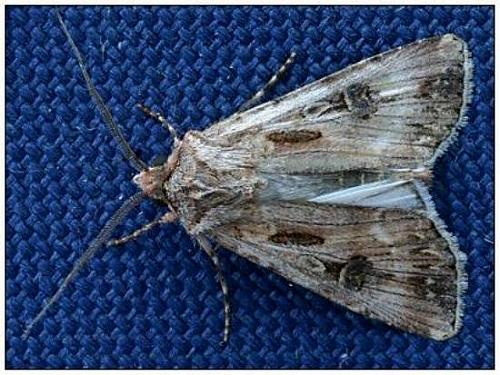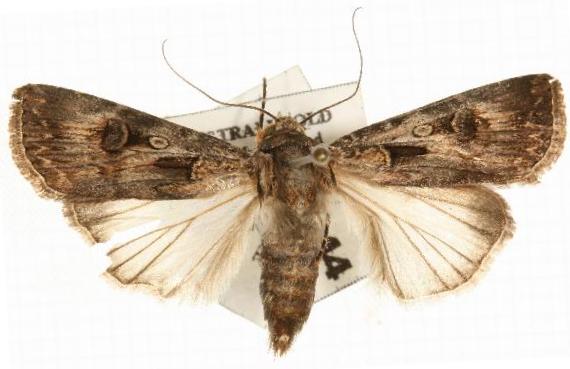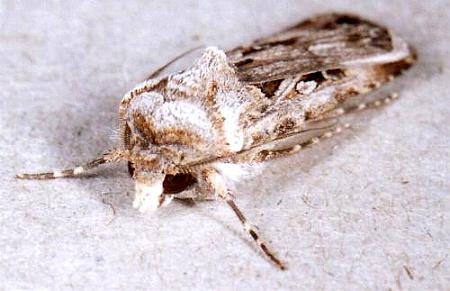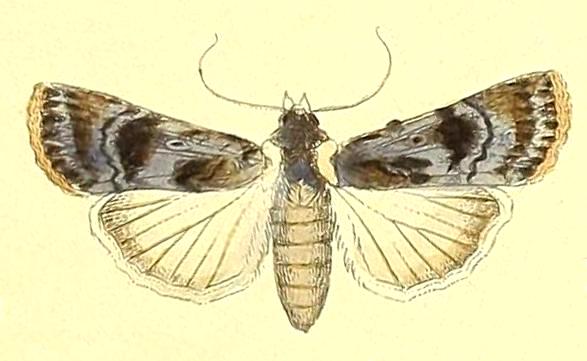
| Brown or Pink Cutworm (one synonym : Agrotis scapularis Felder & Rogenhofer, 1875) NOCTUINAE, NOCTUIDAE, NOCTUOIDEA | (donherbisonevans@yahoo.com) and Stella Crossley |

(Photo: courtesy of Graham Goodyer,
New South Wales Agriculture)

| Brown or Pink Cutworm (one synonym : Agrotis scapularis Felder & Rogenhofer, 1875) NOCTUINAE, NOCTUIDAE, NOCTUOIDEA | (donherbisonevans@yahoo.com) and Stella Crossley |

(Photo: courtesy of Graham Goodyer,
New South Wales Agriculture)
This Caterpillar hides in the soil at the base of the foodplant by day, and climbs the plant to feed by night. It feeds on a wide variety of herbaceous plants:
and other crops and weeds. Its habit of feeding on crops makes it an agricultural pest.
As the caterpillars grow, the later instars become darker, until they end up dark brown. They grow to length of about 5 cms.
The pupa is enclosed in a cocoon under the soil.

The adult moths have a complex grey-brown pattern on the forewings. The hindwings are white.

At rest the moth holds its wings like a tent over its body. The moth has a wingspan of about 4 cms.

The species has been found on the Pacific islands and
as well as over most of Australia, including:

Further reading :
Ian F.B. Common,
Moths of Australia,
Melbourne University Press, 1990, fig. 50.6, pp. 43-44, 64, 467.
Rudolf Felder & Alois F. Rogenhofer,
Zoologisher Theil,
Reise der Osterreichischen Fregatte Novara,
Band 2, Abtheilung 2 (5) (1875), p. 2, and also
Plate 110, fig. 13.
Peter B. McQuillan, Jan A. Forrest, David Keane, & Roger Grund,
Caterpillars, moths, and their plants of Southern Australia,
Butterfly Conservation South Australia Inc., Adelaide (2019), p. 166.
Peter Marriott & Marilyn Hewish,
Moths of Victoria - Part 9,
Cutworms and Allies - NOCTUOIDEA (C),
Entomological Society of Victoria, 2020, pp. 30-31.
Francis Walker,
Catalogue of Lepidoptera Heterocera,
List of the Specimens of Lepidopterous Insects in the Collection of the British Museum,
Part 10 (1856), p. 348, No. 99.
Paul Zborowski and Ted Edwards,
A Guide to Australian Moths,
CSIRO Publishing, 2007, p. 197.
 caterpillar |  butterflies |  Lepidoptera |  moths |  caterpillar |
(updated 15 April 2013, 22 October 2025)